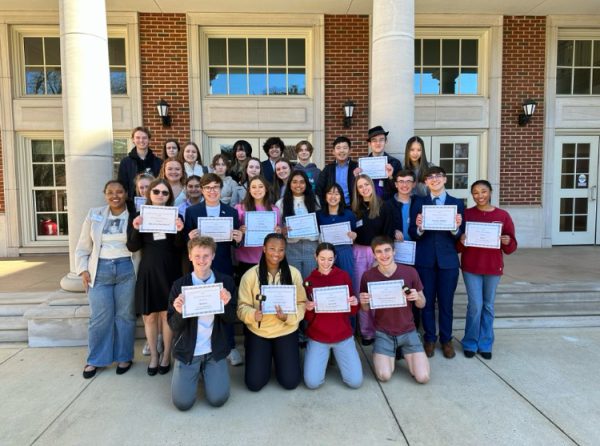HIV is Cured in a Second Patient

An image of Human Immunodefficiency Virus taken with an electron microscope
March 29, 2019
Pretty much every student in the state of Alabama was subjected to the annual “HIV/AIDS Talk”. While this yearly conference was quite necessary and beneficial, it was always a dreaded occasion. Shoving 100 seventh graders into a cramped seating area to listen to a lengthy discussion about bodily fluids was never an anticipated event. The main thing that we all took away from these talks was that HIV was incurable, dangerous, and something to fear. This may not be a reality for the children of our generation.
A team of doctors from Britain, Spain, The Netherlands, and Singapore published a paper at the beginning of the month explaining that they have cured a second patient of HIV. The first patient, also called “The Berlin Patient”, was reported to have been cured 12 years ago. This success is so important because it proves that there is a way to cure HIV, although it may be difficult, it is possible. Both instances resulted from bone marrow transplants, however, both procedures were conducted with the intention of curing the cancer of the patients. Bone transplantation is not a realistic cure for HIV, as the procedure is risky and there are many long-lasting side effects, but what this does show us that a cure for HIV is an attainable goal.
Both bone marrow transplants were from donors with a mutations in a protein called CCR5, which sits on the surface of some immune system cells. HIV uses these proteins to latch onto cells, but the virus cannot do this if the proteins are mutated. Both patients also received immunosuppressive drugs, but the drugs that the first patient (Timothy Brown) received, are no longer in use because of how harsh they are on the body. At first, doctors speculated that the incredibly harsh drugs were the reason that Brown’s HIV had been cured, but this was proven wrong by the second patient. “The London Patient” was given much a much less intense round of immunosuppressants, and his treatment went much more smoothly, but he was still cured.
When asked about her thoughts on a potential HIV cure, Meghan Hall, a Bob Jones junior and a HOSA member states “I believe that there is a possibility, because it is a virus, and there have been vaccines created for viruses that were thought incurable in the past, such as Hepatitis B. Though the fact that HIV is a retrovirus makes it more difficult to create a vaccine due to the complex nature of retroviruses (using reverse transcriptase and all), but the rate of advancement in the scientific field is astonishing, and I have no doubts that it will continue to flourish and may eventually come up with a sound way to cure this virus.”
So if you decide to become a parent, and your child comes home and tells you that they were shoved into a cramped seating area with 99 other sweaty seventh graders and were forced to listen to a lengthy discussion on bodily fluids, there will be a little less fear, and a lot more hope for even greater advances to come.











